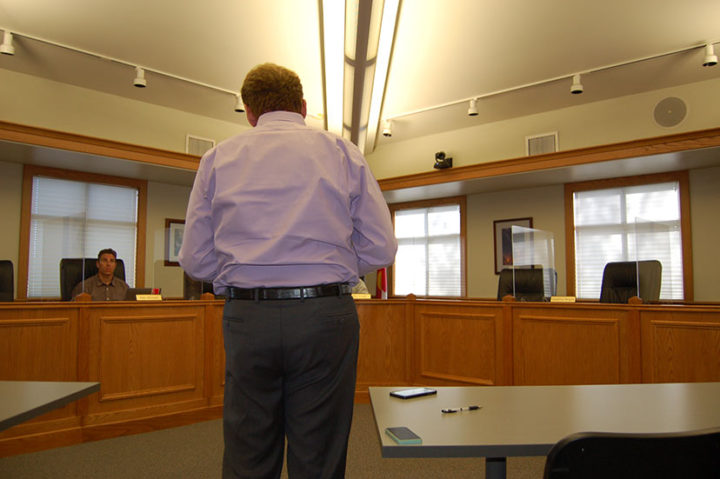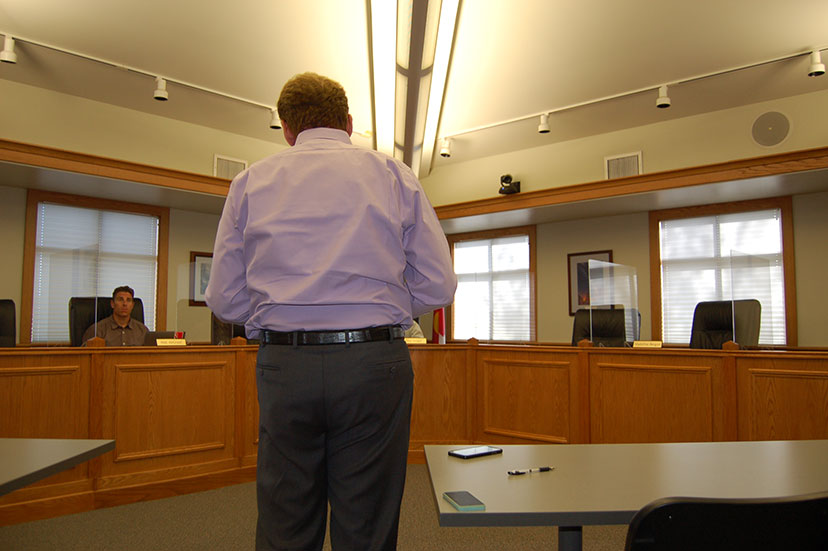Last Thursday, May 27, the Pagosa Springs Town Council met — partly in-person, partly via Zoom — to discuss, once again, the lack of workforce housing in our community.
At one point in the discussion, Council member Mat deGraaf made the case for moving ahead with some honest-to-goodness action steps.
“Because we had these same conversations four years ago. And now we’re circling back on it. And I don’t want to see us having the exact same discussion four years from now. So I love what Council member Pierce just about needing a ‘big step’. This is leadership, right here, where we make bold moves and take big steps to address a real problem. There are lots of different ways to do that, and it all has to do with getting the people together who can make a difference and having real conversations…”
Council member deGraaf is, of course, correct. Housing has been a seemingly endless conversation at Town Hall, already underway back in 2004, when we were just starting to publish the Pagosa Daily Post.
Twenty years ago — in 2001 — the Archuleta County government adopted its ambitious ‘Community Plan’, which stated (among other things):
Policy 1 – Archuleta County and the Town of Pagosa Springs should encourage the construction of new affordable housing units.
Action Items:
1. Develop incentives for developers to encourage them to build aesthetically pleasing affordable housing units.
2. Develop incentives to encourage that a certain number of affordable housing units are built as a percentage of total houses constructed.
3. Recognizing that mobile homes are affordable housing units, develop standards for design, landscaping, and screening new mobile home parks and subdivisions.
Practically speaking, none of these action steps were taken, between 2001 and 2018. No new mobile home parks were developed. A few minor ‘incentives’ have been put in place since 2018, but with little effect, so far, on the lack of affordable workforce housing under construction… except for the 34-unit Rose Mountain low-income housing project on Hot Springs Boulevard… and a 10-unit apartment underway on Lewis Street, to house Springs Resort employees.
Meanwhile, according to the 2017 Archuleta County Housing Needs Study, somewhere in the neighborhood of 60 percent of our community’s real estate has been purchased by second-home buyers, or has been converted into STRs (short-term rentals).
We can, of course, thank our local governments for encouraging the second-home market… and for helping to make those STR conversions easy and painless… and for spending millions of dollars promoting a low-wage tourism industry while spending almost no money or effort “encouraging the construction of new affordable housing units.”
But the conversation continues, unabated. At the May 27 work session, businessman and activist Mark Weiler — a current member of the Town Planning Commission — reminded the Council that the housing crisis has indeed been under discussion for more than a decade. Mr. Weiler then outlined three likely, and convenient, revenue streams that the Town could direct toward housing subsidies and the purchase of vacant property, and — like Council members Shari Pierce and Mat deGraaf — encouraged the Council to act boldly and take some big steps. (Not in those exact words.)

Leading up to this discussion, Town Manager Andrea Phillips had shared a presentation via Zoom, summarizing recent actions by the Town government. And indeed, there have been a few steps taken in the right direction recently. Additionally, there’s “work in progress” at Town Hall, including a review and rewrite of the municipal land use code; a couple of Requests for Proposals (RFPs) related to the town’s purchase of a half-acre lot on Apache Street; ongoing discussions about capping the number of vacation rentals with the town limits; an ongoing search for vacant land that might be suitable for future housing projects; a possible ‘tiny home village’ near Walmart; a new ‘density bonus’ program.
Ms. Phillips also summarized some as-yet-untapped funding sources, including the ones Mr. Weiler would mention a bit later in the meeting.
Finally, she summarized some of the current challenges, including:
“Lack of financing to build missing middle options”
“Increasing housing prices and lack of inventory”
“Cost of building materials keep increasing”
“Labor shortage/Builders”
“High demand market”
“Keeping existing units in good shape and affordable”
This list touches on two different types of challenges. Related, certainly, but different.
On the one hand, there are certain reasons why the Pagosa Springs community has not built enough housing to keep up with demand, especially since the Great Recession.
On the other hand, the lack of housing inventory — and the conversion of existing housing into vacation rentals — has created a “high demand market” with “increasing housing prices and lack of inventory”.
The reasons why Pagosa Springs has failed to build enough housing to keep up with demand? Some of them are in the list above. We note the “labor shortage”, which is at least partly due, of course, to the “housing shortage”. A “self-fulfilling prophesy” you might say.
We note that the “cost of building materials keep increasing”, which could be addressed locally to some degree, if our local leadership were willing to encourage the return of the once-thriving timber industry here.
We note the “lack of financing to build missing middle options.” This is a very real challenge, if we consider only the ‘federal subsidies’ available for housing construction. But if we were to look closer to home, we find a Town government that recently spent in the neighborhood of $5 million to demolish its existing maintenance shop and build a brand new state-of-the-art complex on South 5th Street.
We find a County government willing to borrow close to $20 million to allow the County Sheriff to abandon his existing jail and office complex, and build a new, oversized, state-of-the-art jail…
…and to allow the Judicial District to also abandon its offices and courtroom in an existing building, for a new state-of-the-art courthouse currently under construction.
In these situations, money was no object to our local leadership. Cost of building materials was no object. A labor shortage was no object. Lack of financing was no object.
We need not even consider the challenge of “keeping existing units in good shape and affordable”, when government is addressing its own tax-funded needs.


